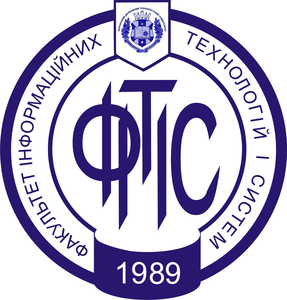Course «Digital Technologies» (Data Science)
The «Digital Technologies» track consists of five modules covering key aspects of data work, including machine learning, statistical methods, databases, and Python programming. Each subcourse is taught by a separate specialist and has a practical focus to prepare students.

Oleksyuk Vadym Volodymyrovych
PhD in Tech., Associate Lecturer; ChDTU
PhD in Tech., Associate Lecturer; ChDTU
Data Mining
Methods for detecting patterns in large datasets for forecasting and decision-making.
Read more
The Purpose:
The purpose of this course is to familiarize students with the concept of Data mining in Data Science, as well as the tasks and methods of Data mining that help to identify connections and patterns in Big Data, which can be used for forecasting and decision-making tasks.
Skills and Competencies: According to D2.3: - General skills (knowledge of AI-structure; a strong foundation in data science; AI-Ethics-skills) - Special skills (AI-monitoring and forecasting the state of the IT market; AI-detection Web-contents for trends forecast)
Content: Functional and structural description of Data Mining technology. Formulation and solution of classification tasks (classification, clustering, pattern recognition), identification (structural, parametric, and structural-parametric), and forecasting. Formation of an array of input data. Models and their estimation. Intelligent monitoring technology. Practical implementation. Using Python (with Scikit-learn, NumPy, and Pandas libraries).
Skills and Competencies: According to D2.3: - General skills (knowledge of AI-structure; a strong foundation in data science; AI-Ethics-skills) - Special skills (AI-monitoring and forecasting the state of the IT market; AI-detection Web-contents for trends forecast)
Content: Functional and structural description of Data Mining technology. Formulation and solution of classification tasks (classification, clustering, pattern recognition), identification (structural, parametric, and structural-parametric), and forecasting. Formation of an array of input data. Models and their estimation. Intelligent monitoring technology. Practical implementation. Using Python (with Scikit-learn, NumPy, and Pandas libraries).

Zaspa Hryhorii Oleksandrovych
PhD in Tech., Associate Lecturer; ChDTU
PhD in Tech., Associate Lecturer; ChDTU
Machine Learning
Exploring supervised, unsupervised, and reinforcement learning methods.
Read more
The Purpose:
The module objective is to familiarize students with the concept of Machine Learning in Data Science, the structure of Machine Learning, and Machine Learning methods and their application for solving various problems.
Skills and Competencies: According to D2.3: - Strong foundation in data science - Skills in using machine learning methods and tools
Content: Introduction to Machine Learning. Machine Learning as part of Data Science. Machine Learning Structure. Classical machine learning: learning with a teacher and without a teacher. Reinforcement learning. Tools of machine learning of models (neural networks; deep learning; genetic algorithms for training models; Group Method of Data Handling (GMDH); ensemble methods of machine learning of models). Application of machine learning technologies in everyday life.
Skills and Competencies: According to D2.3: - Strong foundation in data science - Skills in using machine learning methods and tools
Content: Introduction to Machine Learning. Machine Learning as part of Data Science. Machine Learning Structure. Classical machine learning: learning with a teacher and without a teacher. Reinforcement learning. Tools of machine learning of models (neural networks; deep learning; genetic algorithms for training models; Group Method of Data Handling (GMDH); ensemble methods of machine learning of models). Application of machine learning technologies in everyday life.

Piven Oleksandr Borysovych
PhD in Physics & Math., Associate Lecturer; ChDTU
PhD in Physics & Math., Associate Lecturer; ChDTU
Statistical Methods
Mastering statistical data analysis and building regression models.
Read more
The Purpose:
The course aims to provide students with the necessary knowledge and skills in the field of statistical data analysis.
Skills and Competencies: To use statistical methods for the synthesis of regression models to solve business problems. Use statistical methods to assess the accuracy, adequacy and integrity of models built using machine learning algorithms.
Content: Least squares method. Analysis of time series. Statistical analysis of modeling results.
Skills and Competencies: To use statistical methods for the synthesis of regression models to solve business problems. Use statistical methods to assess the accuracy, adequacy and integrity of models built using machine learning algorithms.
Content: Least squares method. Analysis of time series. Statistical analysis of modeling results.

Nemchenko Vadym Vyacheslavovych
PhD in Tech., Associate Lecturer; ChDTU
PhD in Tech., Associate Lecturer; ChDTU
Databases
Designing relational DBs, working with MySQL, PostgreSQL, OLAP for data analysis.
Read more
The Purpose:
The purpose of the «Databases» section is to study the design of relational databases, methods of preserving integrity and automating design according to their purpose, including selecting, adding, deleting, and updating data as simple work on tabular data, as well as combining, grouping, filtering, sorting as complex processing. The basics of the MySQL and PostgreSQL relational query languages are studied using the PgAdmin shell with further opportunities to connect both local and remote SQL databases through the Python SQLite library for data management and processing. The features of OLAP technology application for fast processing of large data sets in real-time are considered.
Skills and Competencies: General AI-based job skills: - Ability to collaborate with AI systems - Development and integration of AI - AI-augmentation of skills Special AI skills: - AI-support to help customer support handle clients' requests - AI-support in generating content
Content: The concept of a database system and components of a database management system. The relationship between relational model values and database elements. Manage relational databases with the MySQL query and report language. Features of creating Databases and data processing in PostgreSQL. Executing a group of queries using PostgreSQL. The concept of a data warehouse. Data warehouses that support Data Mining technology. OLAP technology as a tool for analyzing large amounts of data in real time.
Skills and Competencies: General AI-based job skills: - Ability to collaborate with AI systems - Development and integration of AI - AI-augmentation of skills Special AI skills: - AI-support to help customer support handle clients' requests - AI-support in generating content
Content: The concept of a database system and components of a database management system. The relationship between relational model values and database elements. Manage relational databases with the MySQL query and report language. Features of creating Databases and data processing in PostgreSQL. Executing a group of queries using PostgreSQL. The concept of a data warehouse. Data warehouses that support Data Mining technology. OLAP technology as a tool for analyzing large amounts of data in real time.

Metelap Volodymyr Volodymyrovych
PhD in Tech., Associate Lecturer; ChDTU
PhD in Tech., Associate Lecturer; ChDTU
Python
Basics of Python, working with arrays, statistics, ML libraries, and visualization.
Read more
The Purpose:
The purpose of the module is to familiarize students with the means of software development, data presentation, and analysis in Data Science using Python and other instruments, including their application for solving various problems.
Skills and Competencies: According to D2.3: - General skills (AI-assisted tasks; using machine learning; development and integration of AI) - Special skills (using TensorFlow and PyTorch; skills in programming language Python)
Content: The following topics are included: - Python basics for working with Data Science - Working with data arrays in Python (NumPy) - Statistical data processing tools in Python (Pandas) - Data visualization tools in Python (Matplotlib) - Machine learning tools (TensorFlow, PyTorch) - Tools for working with databases in Python (MySQL)
Skills and Competencies: According to D2.3: - General skills (AI-assisted tasks; using machine learning; development and integration of AI) - Special skills (using TensorFlow and PyTorch; skills in programming language Python)
Content: The following topics are included: - Python basics for working with Data Science - Working with data arrays in Python (NumPy) - Statistical data processing tools in Python (Pandas) - Data visualization tools in Python (Matplotlib) - Machine learning tools (TensorFlow, PyTorch) - Tools for working with databases in Python (MySQL)



